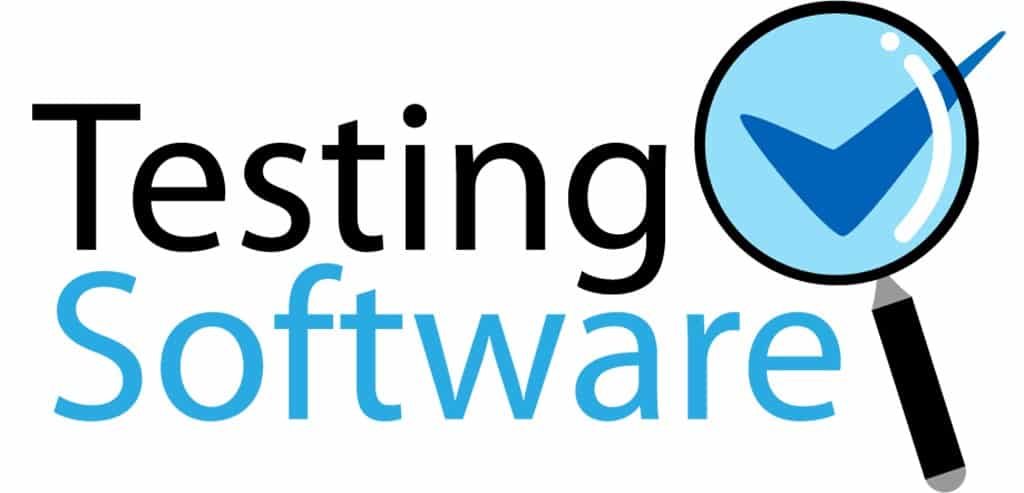
Custom software (also known as custom software) is software that is specifically developed for a specific organization or other user. As such, it may oppose the use of software packages developed for the mass market, such as commercial software sold on the shelves or existing free software.
Developing software or an application that meets specific business requirements is essential for survival in today’s competitive age. Custom software development is the process of conceptualizing, designing, building, and implementing software for a particular individual or group of individuals within an organization or as a third-party arrangement.
Custom Software is designed to meet the specific needs of users and is considered more efficient than commercial software sold (COTS). Because COTS targets a wider set of requirements, it is ideal for a wider audience. Standard software is promoted and sold so that different companies can incorporate it into their day-to-day business applications. One of the best examples of turnkey solutions is Microsoft Office, as it can meet the needs of a wider audience globally.
Not every business need can be generalized. Business processes and specific teams have a specific set of needs that require specialized solutions. This is where custom software development finds its application. For example, course module portals or industry-specific e-commerce software for a simplified shopping experience are custom software packages.

What is the difference between Custom Software and Standard Software?
The issue of construction in relation to purchasing continues to affect companies looking for software solutions. The finished software is ready to use as soon as it is installed on the device or computer. Custom software, on the other hand, is designed and developed to meet specific requirements.
Both of these technologies have a significant gap in terms of functionality, usability and performance. Each technology has its advantages and disadvantages, and here is a draft of the same.
Implementation
Coding is getting easier every day. Earlier, developers spent weeks running through codes. Today, students are being trained to encode at the high school level, and an increasing number of open source clips are readily available for any functionality. The intuitive drag-and-drop interface provided by IDEs allows the development of highly advanced applications even without writing code. Basic knowledge of coding may be enough to quickly make the necessary adjustments.
But the simplicity of coding doesn’t mean software development is an easy walk. Coding is just one aspect of the entire software development process. Requirements collection, UI / UX design, testing and upgrades are other key stages of the development process that require experienced and qualified resources. Custom software development can seem like a manageable proposition despite the high skills required. Development tasks can distract firms from their core focus. Internal IT resources may already be involved in day-to-day maintenance activities, and development tasks may affect their effectiveness.

Integration
In an era where data analysis is key to staying competitive, organizations require seamless integration of software with other systems at the firm level. When it comes to integration capabilities, finished software may not integrate seamlessly with other software systems. The extra investment and time in custom software development can be valuable as it can be designed and developed to allow seamless integration.
Flexibility
Flexibility is one of the key factors when considering technology for your business. The software needed for your company should be upgradeable enough to meet current and future requirements. As your business expands, you may need to add new features and functionality. Therefore, it is better to approach software development in a flexible way. Standard software cannot provide this capability.
Upgrades
There is no doubt that the finished software provides you with impeccable customer support. But sometimes they don’t update for a long time because you may have to work with an outdated product, which will negatively affect your business. Custom software allows you to make any changes you need and whenever you want. You are responsible for making decisions regarding new upgrades and features when developing custom software. You don’t have to wait for new releases to add new features to your software.
What are the advantages and disadvantages of custom software development?

Benefits
Specific solutions for needs
Since each firm has some specific business operations, custom software is the best solution for their needs. It is designed to meet the special requirements of individuals or groups of individuals. It also improves productivity because you get what you want, which gives you a competitive advantage.
Security
Security is at the core of every software and business because no one wants an application that can be easily compromised. Custom software can reduce security risks by allowing you to add as many security measures as you want. You do not have to depend on the limited safety features of any finished product.
Easy integration
Custom software is designed to allow easy integration with existing software and programs in your business. Software developers can help you design software for seamless integration, enabling easier adoption and improved business productivity.
Freedom of use and control
Custom software gives companies the freedom to update and use the application, allowing complete control over the software. You own the custom software and have every right to update or use it as you wish.
Disadvantages
High cost of development
The cost of developing custom software is relatively high for firms, while market forces reduce the cost of finished software software solutions. Maintenance and support costs are also added to the cost of custom software. However, the cost of custom software development seems to be worth its functionality once it is implemented.
It takes a lot of time to build
A full-fledged custom software application for business takes a lot of time in its development because business needs may not always seem as clear as many would think. A lot of time is invested in research and analysis to clarify all requirements and detect those that are not clear or direct.
Risk of working with the wrong programmer
Risk of working with the wrong person or company is a common problem for most industries, not just software development. Choosing the wrong supplier can waste time and money. Because you may come across many custom software development companies in the market, you may end up choosing ones that provide low-quality or non-professional software development services. Therefore, it is recommended not to rush when hiring a developer. Spend more time researching to protect yourself from losses later.
Before you embark on the path of custom software development, consider the above pros and cons to understand what your business requires.
Software development process

You can find a variety of software development models, including the Spiral Model, the Waterfall Model, and the Agile Software Model. Among all these models, the agile model is the most popular. Each software development model has a specific approach to ensure successful product delivery. Methods may vary; however, there are some phases that each model involves.
Here are some necessary steps to help software development companies succeed:
1. Collection of initial requests
During the initial application collection phase, the development firm holds many meetings with the client to collect all the project requirements.
It is the stage where designers and developers understand the project specifications, the goals to be achieved by the software, who the software users are and how customers want the product to work. Gathering all of this information helps a software development firm figure out if you can get along well with its project.
2. Request analysis and planning
After collecting the requests, the development firm begins to analyze them to develop a database of software applications. That is why requirements analysis and planning is the most important phase of the whole development process. It is important to perform a careful analysis in order for the development firm to meet all the needs of the clients. At this stage, the client’s goals are transformed into a plan so that the two visions can meet.
Before moving on to the next phase, the client’s requirements must be documented and verified on both sides. Customer requirements are recorded in the Software Requirements Specification Document (SRS) on the basis of which the product was designed and developed. Request planning also ensures that there will be no misunderstandings.
3. Visual and technical design
Once a firm understands what it needs to build, they need to identify how to do it. Each software solution requires a special approach; therefore, designing a system architecture is crucial for any project. The internal design of all software modules is specified in the SRS document. The parameters considered at this stage are design modularity and risk assessment.
An exterior design can also be made during this phase. The results of this phase include wired frames, technical architecture, database design, high fidelity displays, marvel prototype, user stories, and database schema
4. Development and implementation
This phase can be the longest as the actual product develops. Developers begin programming the software, following the software requirements specification document, and visual and technical design. If the stages before the development phase are completed with great attention to detail, coding can be achieved seamlessly.
Each development team performs development activity from a different angle depending on the type of software development model. Most companies today implement an Agile methodology that includes iterative meetings called daily Scrum meetings, during which each team member reports on progress and problems on their tasks.
5. Testing
Testing is usually performed after the product has been developed and ready for release to find and correct deficiencies. During testing, testers perform different types of non-functional and functional testing. In the testing phase, the critical features tested are:
Basic functions of the application.
Installation on localized machines.
Compatibility on different devices.
Enter text.
In case an error is detected, it is corrected and re-tested. The testing process continues until the software meets the quality requirements. The software needs to be tested by both the development team and the client team.
Here are the types of software testing techniques you should implement to test the quality of your custom software:
Functional testing
Functional testing is a type of testing that involves testing the functionality of a software application. While performing functional tests, you must test each functionality of the software. You need to see if you are getting the results you are looking for or not.
Functional tests can be done both manually and with automation tools. Tools that can be used for functional testing are Selenium, soapUI, Watir and JUnit.
Different types of functional testing include:
Unit testing
Smoke testing
End-to-end testing
Integration testing
Acceptance testing
Regression testing
Whitebox Testing
Interface testing
Black box testing

Non-functional testing
Non-functional testing is testing non-functional aspects of an application, including reliability, usability, security and performance. They are performed after functional tests.
Non-functional testing can greatly improve the quality of your software. Non-functional testing speaks to how well the software works and many other components.
Types of non-functional testing include:
Performance testing
Load testing
Failover Testing
Usability testing
Performance testing
Localization testing
Security testing
Reliability testing
Endurance test
6. Installation and maintenance
The software application is released after thorough testing. But some people call the project “done” after it’s released. When you start using the software, you may encounter some unexpected problems. Based on the priority of the problem, they can be fixed immediately or improved later.
When it comes to software deployment, you need to decide whether you need a cloud deployment or an on-premise deployment.
The implementation of on-premise software means that the software is located on the company’s own servers and protected by an internal firewall. Previously, this was the only way to integrate external software or applications with the company’s code base. This is useful if your organization requires complete control over integrations with external functionality.
However, on the other hand, implementing cloud software means building a virtual computing environment. Cloud-based implementation provides organizations with scalable and flexible virtual computing resources. Cloud platforms such as AWS, Azure, Google Cloud and other platforms can be used to deploy software in the cloud.
Maintenance is one of the benefits of custom software applications because the development company takes care of your project even after release. As part of the maintenance service, the software development firm manages all upgrades and additional features.
What are the qualities you should pay attention to when developing custom software?
Developing a custom software application is not an easy task. Therefore, people are looking for software development companies that can accurately understand their requirements and deliver robust and scalable software. But understanding the criteria alone is not enough. You need to pay attention to some characteristics and qualities that can help you find a reliable partner.
Here are some of the qualities you need to consider in a custom software development team:
Experience and technical skills
A software development company can only be considered a leading development firm based on the applications they have built and the success rates that the firms have achieved. Software development companies with strong technical and leading skills will have a good portfolio of projects. A company with a deeper understanding of the latest technologies and experience working with startups and Fortune 500 companies can manufacture and deliver a scalable product.
Communication skills
Strong communication skills are key to understanding user goals and requirements. With the right communication skills and knowledge of the project, a software development company can carefully design and develop software that can bring value to its business. Communicating with clients from time to time is essential for a long-term relationship with clients. A software development company that uses business-class communication tools such as Zoom, Skype for Business helps teams connect effectively with customers.

Strong business skills
Knowledge of technical and programming language is not enough. A software development company must also have strong business skills to advance ideas and turn them into reality. Checking their background on past projects and references can give you a better idea of their experience in custom software development.
Price structure
Before you sign a contract with any software development company, make sure that it provides you with a clear picture of the costs involved in all stages of software development. It is better to avoid hiring a company that hides costs.
What mistakes should you avoid when creating custom software?
While custom software can reduce costs and improve productivity, it also has some drawbacks. Therefore, before you invest in custom software development, you should know about the common pitfalls to avoid.
Developing the wrong features and unwanted complex solutions
When they invest in custom software, everyone hopes that it can add value to their business. When you think about creating software based on your imagination, you could get off track and spend a lot of money on the wrong functionalities. It is important to enable interaction between products and end users in the early stages of development to avoid costly mistakes. With the prototype, people are involved in all stages of development and can help convey their vision. Pre-development prototype development can help visualize the actual product and answer questions about features or functionalities.
Make important decisions as soon as possible
Decisions made at an early stage of the project can be risky. Early decisions can have inevitable and disastrous consequences over the course of a project. But that doesn’t mean you don’t have to make decisions at all. Instead, you must first gather the requirements of your product and decide what needs to be done to achieve the goal. For example, decisions about features and their development together can ensure the delivery of needed features and leave less room for change.
It does not provide acceptance criteria for every feature
Acceptance criteria are pre-defined requirements that must be met in order for a software development task to be marked as successful. Defines the scope, desired results, and test criteria for the functionalities the team is working on. Defining all desired outcomes before development begins helps to promote common understanding. Acceptance criteria should be understandable to developers. Acceptance criteria should provide a user perspective and should be concise and clear.

Conclusion
Custom software development has a number of benefits. With increasingly specialized firms and complicated internal systems, custom software has become a necessity for most firms. Custom does not mean “expensive”. Leveraging an existing solution and adapting it to new features can help you get multiple customization benefits without huge costs.
More texts on Digital Marketing, Social Networks and Web Design can be found here.
